
Seemannia 'Little Red'
Seemannia is a small South American genus in the same family (Gesneriaceae) as african violets and gloxinias (and until recently Seemannia was included in the genus Gloxinia). The species and a few hybrids (primarily my own) are in very limited cultivation, but I believe that with a bit of tweaking they may have some commercial potential as bedding and container plants. (Photo: Seemannia 'Little Red', one of my own hybrids)
Seemannias have wonderful brightly-colored flowers, but the plants are exceedingly boring when not in bloom. One species, Seemannia sylvatica (syn. Gloxinia sylvatica, Seemannia latifolia) has been in cultivation for a very long time and is used as a bedding plant in southern Florida, where it blooms in the winter:
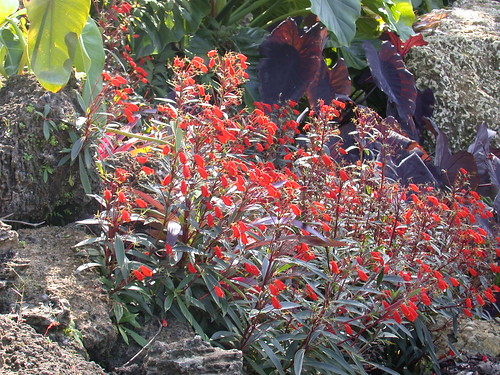
Seemannia sylvatica (Fairchild Tropical Gardens)
In recent years a new wild collection of Seemannia nematanthodes from Argentina has been sold (as Gloxinia nematanthodes 'Evita') by Plant Delights Nursery. Working with this and other species, I'm producing a group of hybrids with better growth habits, more attractive foliage, and a wide range of flower colors, with the ultimate goal of producing plants that are reliably hardy in zone 7.
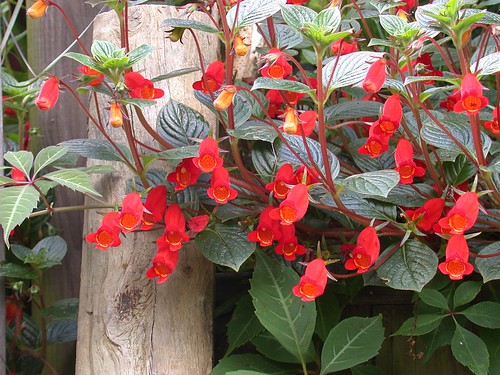
Seemannia nematanthodes 'Evita'
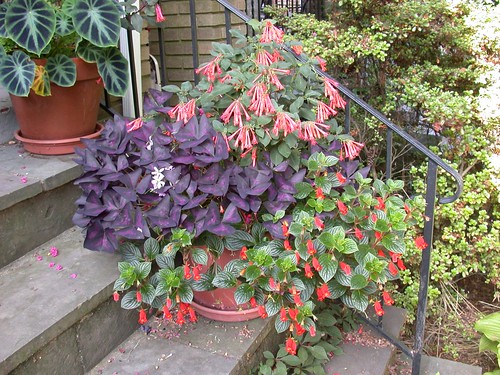
Seemannia nematanthodes 'Evita' in a mixed container
Seemannia gymnostoma is another species from Argentina; this species has occasionally overwintered in my garden, but returns weakly. Seemannia gymnostoma differs from the others in having a fairly large limb ("petals") with distinctive speckling:
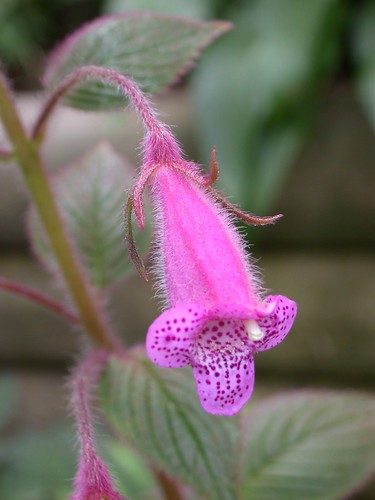
Seemannia gymnostoma
I've grown seemannias for over 20 years but never gave much thought to breeding them. The turning point came with Seemannia purpurascens. This species is typically a tall and rather weedy-looking plant with plain green leaves and small pink flowers, but in the wild is quite variable and new collections from Bolivia with dark leaves pointed me in the direction of producing hybrids with more attractive foliage that have garden interest even when they're not blooming. My first seemannia hybrid was S. purpurascens 'Purple Prince', a cross between two different collections of the species that I hoped would combine the dark foliage of one parent with the larger flowers of the other.
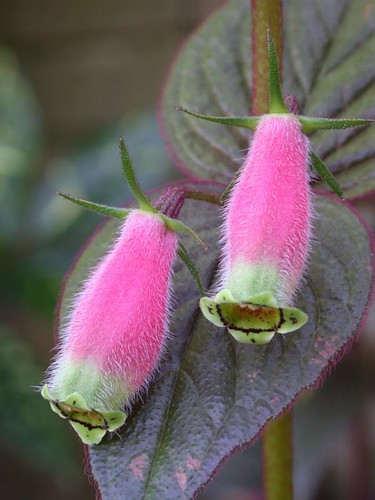
Seemannia purpurascens 'Purple Prince'
Crosses between dark-leafed forms of S. purpurascens and S. nematanthodes produced dark-leafed hybrids with bright red flowers:
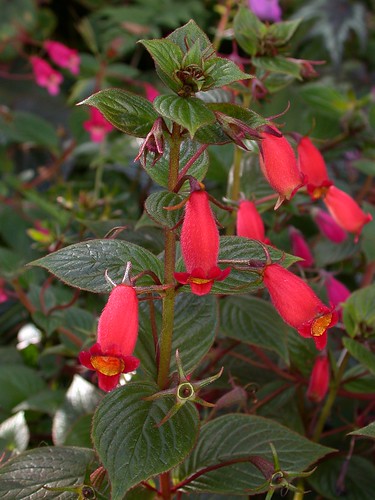
Seemannia 'Red Prince'
These in turn crossed with S. gymnostoma produced hybrids with flowers in a wide range of colors. This photo shows an assortment of hybrids I was testing a few years ago:

More recently I've been producing and testing pink-flowered hybrids:

This photo shows how seemannias can add color to a tropical-themed bed; the flowers may be small but they pack a big punch, especially when planted in large groups:

Culture: Seemannias grow best in rich, well-drained soil that is neither overly wet nor overly dry. They will grow and bloom in bright shade but will remain compact and bloom best if given direct sun for part of the day, ideally the morning. Even in bright light the species and most of the hybrids tend to flop gracefully but can look nice spilling over the edge of a wall or container. Pinching out the tips on young plants will encourage branching and produce more compact, bushy plants. The plants go dormant in the winter, producing scaly rhizomes (exactly like those of the closely related genus Achimenes) that should be kept cool and dry. Propagation is from stem cuttings, leaf cuttings, or scaly rhizomes. A scaly rhizome can be broken into pieces, even down to individual scales, and each part will produce a new plant. In the spring, plants can be started under lights indoors for planting out after all danger of frost is past. However, I cannot stress enough that seemannias do not make good houseplants. They can be grown indoors, but usually don't get enough light and will grow tall and floppy with few flowers. Seemannia nematanthodes and some of the hybrids are hardy to zone 7b (and may survive a warm winter in colder zones) but winter survival is best with perfect drainage and/or dry soil. Seemannias also make excellent container plants.
So why do I think this genus has commercial potential? First and foremost, the plants are very easy to grow and propagate. They have no specialized cultural requirements, are heat-tolerant and more or less pest-free. They produce brightly colored flowers that are very attractive to hummingbirds. They have a long blooming period, from mid-summer until frost during a period when many other flowering plants are pooping out. (In my own garden, they begin to bloom about the same time Lobelia cardinalis finishes.) The newer hybrids are attractive even when they are not in bloom--an important consideration for sales. The plants do well both as bedding plants and in containers.
The one hurtle I have yet to overcome is hardiness: none of my hybrids has yet proven hardy in my zone 7a/b garden (but I'm working on it!). Even so, I believe they are worth growing as annuals. I'm currently working to produce dark-leafed hybrids with a wider range of colors on larger flowers; the following photos show some of the plants I've gotten from more recent crosses:
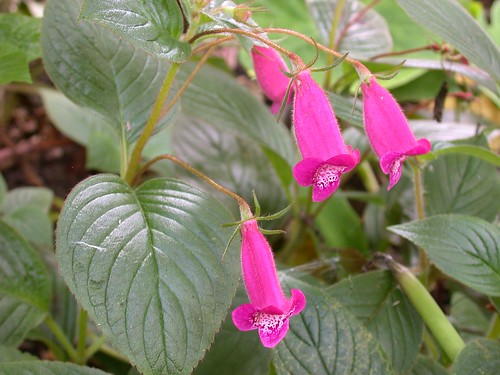
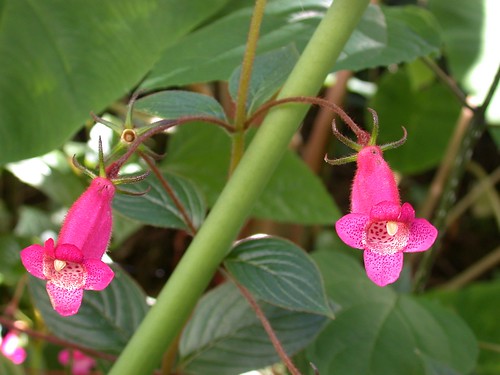

This last photo shows some of the results from a single cross. I'm still one generation away from getting these flowers with dark foliage, but I'm making those crosses right now:
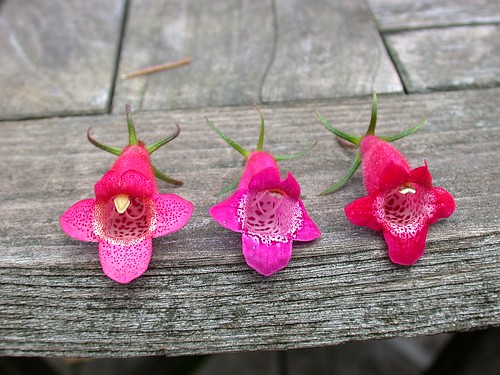
For further information:
Seemannia (article in September 2010 Petal Tones, the monthly newsletter of the National Capital Area Chapter of the Gesneriad Society)
Seemannias as Bedding Plants (article in September 2011 Gleanings, the monthly newsletter of the Gesneriad Society)

No comments :
New comments are not allowed.